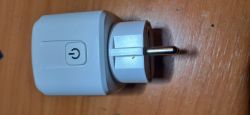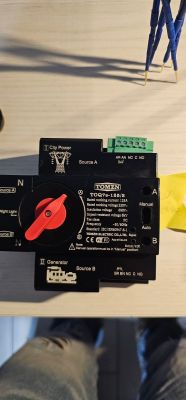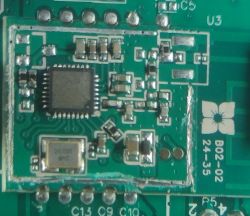However, I was wrong. This second set of parameters is not for communication with the valve but with the Spider module.
The modules work in Modbus RTU, with a speed of 9600.
The communication looks like this:
1. Cobra sends a register request from address 0:
005 004 000 000 000 001 048 078
Spider responds with code 054 147:
005 004 002 054 147 031 061
(2) Cobra queries modem version and status (addresses 1-9):
005 004 000 001 000 008 161 136
Spider replies:
005 004 016 000 212 000 000 000 000 000 000 000 000 000 002 000 015 000 000 057 128
where:
005-module address
004 - Modbus message type
016 - number of returned bytes
000 212 - version 2.12
000 000 CH setting change
000 000 Change of HUW setting
000 000 1=start
000 000 1=stop
000 002 - modem status (001 - initialisation, 002-SIM error, 003-PIN error, 004-logging in, 005-logged in, 006-SMS error)
000 015 - GSM signal level
000 000 - ?
057 128 - CRC
The return of this message with a changed CH, DHW or start/stop setting temperature changes the Cobra settings.
Cobra saves the parameters to the module
005 016 000 000 040 080 000 000 002 172 002 158 000 255 001 003 000 002 000 039 000 080 000 000 001 043 052 056 XXX XXX XXX XXX XXX XXX 000 000 000 043
where:
005-address of module
016 - Modbus message type
000 000 - address of first register
040 080 - 40 registers, 80 bytes
000 000 - error codes (description at the bottom)
002 172 - CH temperature
002 158 - HUW temperature
000 255 - feeder temperature
001 003 - return temperature
000 002 - room thermostat status (0 - off, 1 - on, 2 - not working)
000 039 - set CO temperature
000 080 - set temperature of DHW
000 000 - whether controller is turned on (000 001 - on)
000 001 - whether the controller is off (works alternately with the previous register - only one of them is set to "1")
043 052 056 XXX XXX XXX XXX XXX XXX XXX XXX 000 - first phone number stored in ASCII
000 000 000 043 052 000 000 - ??
043 052 056 049 049 049 049 049 049 048 000 - second telephone number recorded in ASCII (here +481111111110)
000 000 043 052 000 000 - ??
043 052 056 057 057 057 057 057 057 057 057 057 000 - third telephone number recorded in ASCII (here +489999999999)
000 000 - ??
068 - oven temperature in degrees (no fractional part)
000 000 000 - ??
112 134 - CRC
Error codes are in the form of flags. In the first byte, 5 lower bits can be set, in the second byte all 8. Setting several bits will send all set alarms in the text.
first byte:
bit 1 (1) - Large feeder current
bit 2 (2) - High DHW pump current
bit 3 (4) - CH pump high current
bit 4 (8) - Igniter high current
bit 5 (16) - Blower high current
second byte
bit 1 (1) - High boiler temperature
bit 2 (2) - Bin fire
bit 3 (4) - STB alarm
bit 4 (8) - Feeder blockade
bit 5 (16) - Fuel shortage
bit 6 (32) - Open hopper
bit 7 (64) - Bottom ash
bit 8 (128) - Temperature sensor fault
Spider confirms data storage:
005 016 000 000 000 040 193 147
4th Cobra queries 40 registers (first address 0):
005 003 000 000 000 040 068 172
Spider responds:
005 003 080 000 000 002 166 002 157 000 244 001 132 000 002 000 039 000 080 000 000 001 043 052 056 XXX XXX XXX
where:
005 - module address
003 - modbus message type
080 - number of returned bytes
000 000 - ??
002 166 - CH temperature
002 157 - HUW temperature
000 244 - feeder temperature
001 132 - return temperature
000 002 - room thermostat status
000 039 - preset CH temperature
000 080 - set HUW temperature
000 000 - whether controller is turned on (000 001 - on)
000 001 - whether the controller is off (alternates with the previous register - only one of them is set to "1")
043 052 056 XXX XXX XXX XXX XXX XXX XXX XXX 000 - first call
000 000 000 043 052 000 000 - ??
043 052 056 049 049 049 049 049 049 049 048 000 - second telephone
000 000 043 052 000 000 - ???
043 052 056 057 057 057 057 057 057 057 057 057 057 000 - third phone
000 - ???
000 067 - CO temperature in full degrees
000 000 000 - ??
242 018 - CRC
If there is no communication for more than one minute, the module sends last error messages and a "no communication with the controller" alarm
This is probably all that can be extracted from this device

.
When communicating with Cobra, response times are very important. A delay of 100ms can result in the message being sent being rejected. After sending, you also need to add some time before switching to receive. When communicating with the Arduino, I set a 10ms delay before transmitting and 100ms at the end before switching the module to receive.






